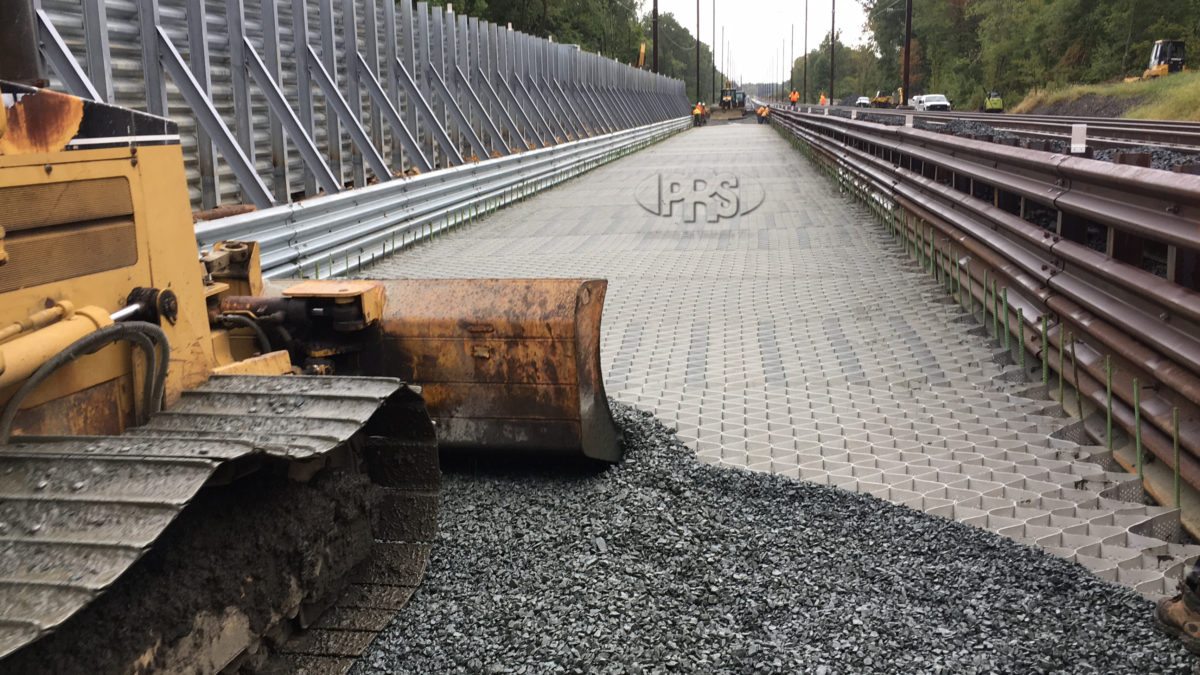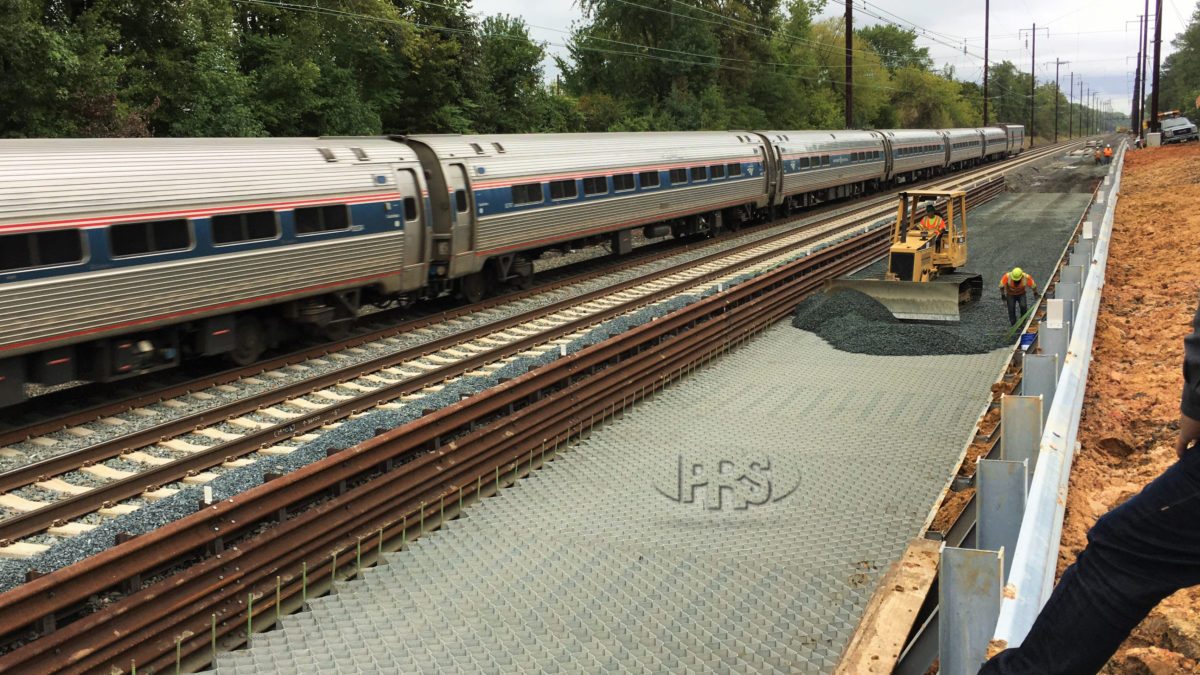Neoloy Tough-Cells lowered pressure on ballast/subgrade by 50%, reducing track maintenance cycles by a factor of 6.7x.






A comprehensive performance test was conducted on high-speed rail track which suffered from geometry track degradation and substructure problems. As part of a US Federal Railway Administration (FHA) program to promote innovative railway technologies, Amtrak (US National Railroad Corporation) used PRS Neoloy® Tough-Cells to add support and stiffness in a complete rebuild of a section of high-volume rail corridor with severe ballast fouling from problematic soils, which carries 2,200 high-speed commuter and freight trains daily. The project and impact of the Neoloy Tough-Cells was fully monitored and evaluated on a regular basis by the Harsco Rail Consulting Group, Senior Researchers at the Universities of Delaware and Colombia, as well as by the FHA and Amtrak, to assess the impact of NPA (Novel Polymeric Alloy) Tough-Cells on the track geometry performance.

The authors of the report (Palese, Harsough, Zarembski, Thompson, Pagano and Ling) presented their findings at the 2017 AREMA (American Railway Engineering and Maintenance-of-Way Association Conference. They concluded that Neoloy Tough-Cells improved subgrade pressure distribution considerably and reduced the rate of track geometry degradation. In particular, Neoloy Tough-Cells reduced pressure at the ballast/subgrade interface by 50% and reduced track maintenance cycles by a factor of more than 6x. This typically reduces maintenance cycles from every 3-4 months to once every 3 years, representing a significant return on investment for a site experiencing track geometry degradation, requiring frequent resurfacing.
Challenge – Reducing degradation while maintaining track geometry
The section of track, with a particularly problematic section in the state of Maryland passes through soft clay subgrade with poor drainage that fouls the ballast and creates mudspots. Rapid degradation led to frequent, expensive tamping every 3-4 months. Although classified as Class 7 track for high-speed trains up to 125 mph (200 km/h), excessive degradation often reduced its status to Class 5-6 (90-110 mph – 144-177 km/h). The goal was to restore adequate track substructure strength for safe railroad operation with minimal maintenance requirements.
Validation – Comparative samples assessed
The track required a comprehensive rebuild, which allowed for the opportunity to implement full monitoring sensors to assess the impact of Neoloy Tough-Cells on the track geometry. A section of track was reinforced using a PRS Neoloy Tough-Cell layer designed to strengthen the existing ballast/subgrade material, while adjacent sections were rebuilt to traditional track standards. Subgrade pressure and track geometry were measured over 9 months using pressure transducers, to calculate the track quality index (TQI) and quantify the contribution of the Neoloy reinforcement.

Results – Significantly reduced pressure, more stable track geometry
In the section of track reinforced with Neoloy Tough-Cells, recorded pressure data magnitude was roughly 50% of the pressures in the non-reinforced rebuilt section of track. Data plotted in the 6-month period following the track rebuild, shows that reinforced section was stabilized, experiencing slight degradation, while the unreinforced section suffered from a high rate of degradation.
Graph of Track Quality Index (TQI) before and after installed of Neoloy Tough-Cell Reinforcement
Before the rebuild and Tough-Cell material installation, a TQI degradation rate of 0.0265 inches/month was calculated. After rebuild with the geocell material, a rate of 0.004 inches/month was calculated, constituting a reduction in track geometry degradation rate of 6.7x.
Consequently, while the track previously required maintenance every 3-4 months, with Neoloy Tough-Cell reinforcement maintenance could be extended to once every 3 years. Results suggested that a site experiencing track geometry degradation and undergoing resurfacing at least once annually, would be a candidate for Neoloy Tough-Cell installation with a positive return on investment.
Assuming a surfacing cost of $12,000/per mile, and approximately $25,000/mile in train delay costs, using an estimate of a 50-year NPA Tough-Cell life span, it was calculated that a return on investment of approximately 112% could be expected by using Neoloy Tough-Cells.
Click Here to read the full article
Benefits
The authors concluded that Neoloy Tough-Cells produce a significant improvement in both subgrade pressure distribution and track geometry. This brings the following benefits:
- Significantly reduced maintenance cycles by 6x, significantly reducing costs
- Improved track quality index, increased track life cycle
- Improved operational and economic viability of high speed passenger rail systems
- Additional life cycle savings include reduced track component and vehicle damage, lower delay costs due to track occupancy, and increased safety
- Costs reduction by a factor of 12x